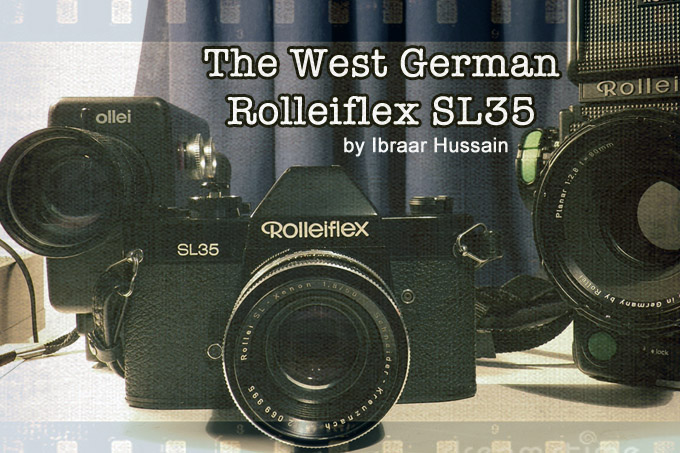
The West German Rolleiflex SL35
by Ibraar Hussain
In the history of photography there are a few legendary marques which have achieved Grail like status, and will always have a place high up in the pantheon of the Photographic Gods, far above Oriental pretenders. Marques which are coveted by collectors, professionals and those wishing to own a piece of History and precision, beautifully crafted engineering. Carl Zeiss of Jena (Est. 1846), Leica of Wetzlar (Est. 1913), Victor Hasselblad of Gothenburg (Est. 1841) and Franke & Heidecke of Braunschweig (Est. 1920) also known as ‘Rollei’.
[ad#Adsense Blog Sq Embed Image]
Hasselblad and Rollei have been famous for their Medium Format cameras, Leica the M series, and Zeiss everything from 35mm to Medium Format Pentacon’s. Back in the day, the industry was smaller and more ‘in house’, and Rollei were the first to move production outside Germany when they acquired factories in Singapore, but their TLR’s were always German built.
The sands of time flow and times change, nowadays some of the original companies are great behemoth like Multinationals with factories and offices throughout the World. Carl Zeiss has been splintered into many factions, or spun off to form other companies such as Jenoptik, Docter Optic and Praktica (a shadow and mockery of its former glory) with other great associated names such as Exakta Ihagee and Pentacon having bitten the dust.
These days it’s 35mm Range Finder, the Zeiss Ikon is manufactured by Cosina in Japan, Zeiss manufactures Optics in Germany.
Modern Hasselblads are manufactured (bar the V Series) in Japan by Fujifilm and Leica make their M series in Portugal (complete with Chinese made components) (and are then ‘finished’ in Germany to warrant the ‘Made in Germany’ inscription).
Rollei has been split into three companies, the brand name ‘Rollei’ has ended up like Praktica has, owned by RCP-Technik GmbH & Co makers of budget Digital Cameras and accessories. The other branch specialises in producing old Agfa Film stock under the brand Rollei Film, but the real Rollei still survives as a small German based camera manufacturer spun off by Rollei engineers and employees with a direct connection to the original founders. DHW Fototechnik manufactures extremely expensive high-end and collectable Medium Format Cameras such as the Rolleiflex Hy6, the Rolleiflex 6008i and new versions of the Classic Rolleiflex TLR. These cameras are very expensive, but oh so beautiful and exquisite – especially the new TLR’s.
Schneider Kreuznach 50mm f1.8. Agfa APX 100, Rodinal. Silver reflector.
–
My Niece Rolleigon 135mm f2.8 Agfa APX 100 Rodinal
Anyway, enough of the history, I seem to be going on and on a bit too much!
Most people covet a Leica M, and for good reason, they’re beautifully built and in the right hands make beautiful photographs, and they’re wonderfully built, solid, heavy and with a feel of precision, damped metal perfection – they look, feel and manifest sheer quality that just to handle one and own one is a joy – think Patek Phillipe or A Lange Sohne.
There are other camera’s out there which are just as beautiful to behold, and just as well-built and exude just the same feeling of quality, worth and treasure, and the Rolleiflex TLR is one such, others are hidden gems, overlooked, under rated such as the Exakta series and Pentacon Six, and can be bought relatively cheaply – if a Mint example can be found, in the 35mm sized world one such example is the Rolleiflex SL35.
The SL35 was Franke & Heidecke first 35mm SLR, and the original SL35 (and the far more rare and expensive SL350) is Rollei’s best.
A snap in Medieval City of Nottingham SL Xenon 50mm f1.8 Agfa APX 100 Rodinal
There are three versions of the SL35, the German-made SL35 of 1970 – 1972 and the later Made in Singapore version 1972- 1976 – both identical on the surface, but not the same underneath. Sure they are made using the same looking parts, but the Singapore versions aren’t built with the same love, care and precision as the German-made ones. I have both examples and you can feel the difference.
The German-made SL35 and SL350 are collectors items, a Mint example is a camera to keep – forever.
Later SL35E and SL35M aren’t in the same class as even the Singapore built SL35 and to be honest, aren’t worth bothering with as collectors items (though they are worth it if you want to use the exquisite optics and the more advanced features they have).
The SL35 is beautiful to behold, it has a simple, totally spartan but elegant bauhaus like design, devoid of superfluous switches and dials, even the hotshot is an after market accessory. The simple lines are difficult to date, 50ies? 60ies? 70ies? the design is timeless and in my view is as glorious as any classic Range Finder.
The German SL35 I have is the stealthy SL35 black, and the attention to detail on it just makes one smile and it begs to be used. It is crafted of solid metal, and feels dense, weighty. Ken Rockbuster describes a Leica as feeling like a well oiled revolver, and I can tell you that this Rolleiflex feels much the same. I also have a Mint German-made SL35 Silver body which is also a beautiful piece of work.
Pembrokeshire Wales. SL-Xenon 50mm f1.8 Kodak Portra 400
Comparing it to the redoubtable Olympus OM2n, the Olympus looks and feels sort of cheap in comparison! Sure the Olympus is a better camera, by better I mean it has Aperture priority and a user-friendly light meter, but then again a Seiko is probably more reliable and accurate than a Patek, and a Casio even more so. The Rolleiflex doesn’t need any gimmicks, it’s simplicity is its strength and any photographer who’s worth his or her salt should thrive with it.
The Film wind crank winds forward with a precision mechanical zip and it’s released to be eased back with a nicely damped slide. The shutter emits a satisfying thunk as it trips.
Looking at top of the camera, the only controls we have are the Film wind crank, shutter release with the stylised “R” situated on top of the shutter speed dial, the button near the shutter release is the stop down/ depth of field preview button. On the other side we have a solitary film rewind knob/ dial.
At the front we have the self timer lever and that’s about it! Basic as it gets!
The Camera has a built-in light meter, powered by a small watch size battery and this is activated by pressing the Stop Down Button, it manifests itself in the form of a needle, visible through the big bright viewfinder (about as big and bright as the VF on an Olympus OM2n)
The meter isn’t the highlight of this camera, as it’s annoying pressing the stop down button, then having to control aperture and shutter speed to get a correct exposure. I have used it, and it’s fairly accurate but only to test it out – I find it easier and thus tend to use a hand-held incident Minolta Autometer III which is pretty good, but the internal meter is there if ever required.
The lenses, well, there are some gorgeous lenses available for this camera, lenses made by Zeiss with the HFT coating (HFT is Rollei trademarked T*) Schneider Krueznach, Voighlander and Rollei Rolleinar lenses. They render beautifully, they probably aren’t as sharp as more modern equivalents but that doesn’t matter, as they manifest a lovely feel in the photographs.
By Lord Byron’s House, Nottingham. SL-Xenon 50mm f1.8 B+W Yellow Filter Agfa APX 100 Rodinal
The Zeiss and Schneider lenses are expensive, some more than others, the Voightlanders are rebranded Zeiss and Rolleinars, the Rolleinars can be bought for peanuts, but that doesn’t mean the Rolleinars are crap – on the contrary they’re superb lenses, made by Mamiya in Japan, well built and of very high quality, in fact tests show they’re to a hairs breadth of the Zeiss and Schneider in terms of quality.
I have the Schneider 50mm f1.8 and the Rolleigon 135mm f2.8 portrait lens., My next lens is going to be a 28mm Rolleinar, though I am watching a 25mm Distagon on eBay.
To sum it all up, the Rolleiflex SL35 is a stunning piece, and to demonstrate how much I value mine I wouldn’t swap it for any other camera bar a new Rolleiflex 4.0 FW – even if offered an Leica M3, M6 or an M9 I wouldn’t swap it – it is my favourite camera and even though I’ve not owned it long, and have only shot a couple of rolls with it, I prize it above all my others. the Rolleiflex SL35 just oozes class, a camera which you can keep and use FOREVER – it’s a joy to own and to handle, turns heads and in my opinion is just as classy as any Leica and it has those magical legend “Rolleiflex” inscribed on it!
Bird over Bedfont Lake. Middlesex. SL-Xenon 50mm f1.8 B+W Yellow Filter Agfa APX 100 Rodinal
my rudimentary ‘blog’; http://rolleiflexed.wordpress.com and Flickr; http://www.flickr.com/photos/71817058@N08/
I’ve only shot three rolls of Film with this Rolleiflex SL35, two shot on Agfa APX 100 and developed in Rodinal, the other roll is Kodak Portra 400. It currently has half a roll of Agfa APX 100 left in it. The shots were basic family snaps and stuff, and I’ve included a few examples here – I’ve yet to shoot the camera in anger! Rudimentary scans with Epson Scan Epson 4990.
I tried to take some pictures of the Rolleiflex with my Kodak Easyshare Z990 – but pictures cannot do it a justice.
For more information check out this excellent site:
http://captjack.exaktaphile.com/rollei/dugrew.html
I bought my Black with SL-Xenon for £175 (around $280) and the SL35 Silver body for a meagre £20! That’s $30 !!

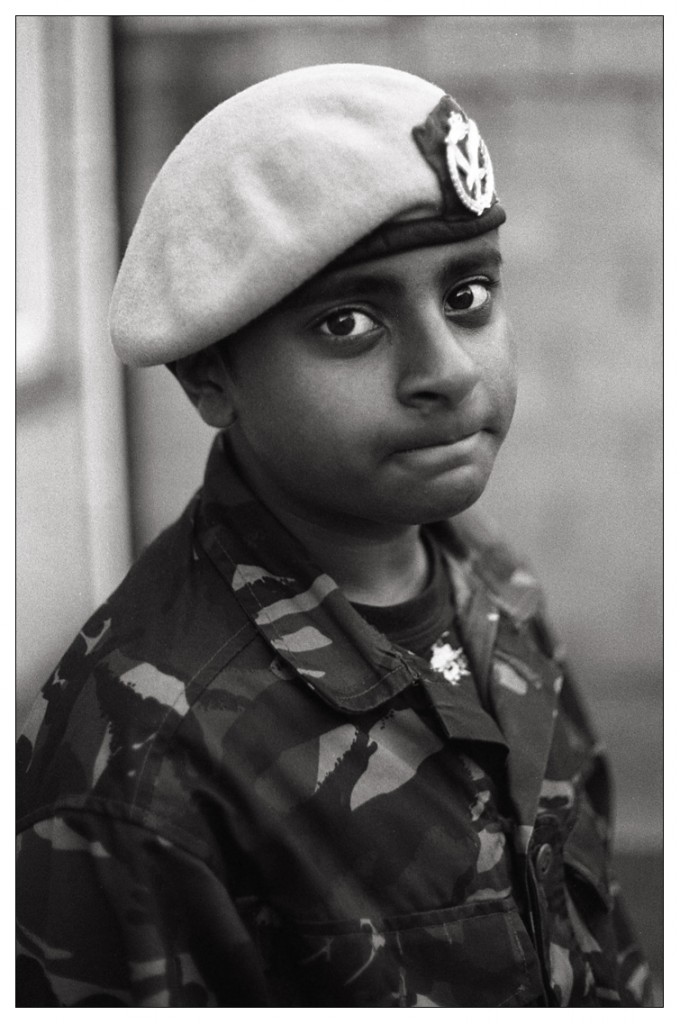
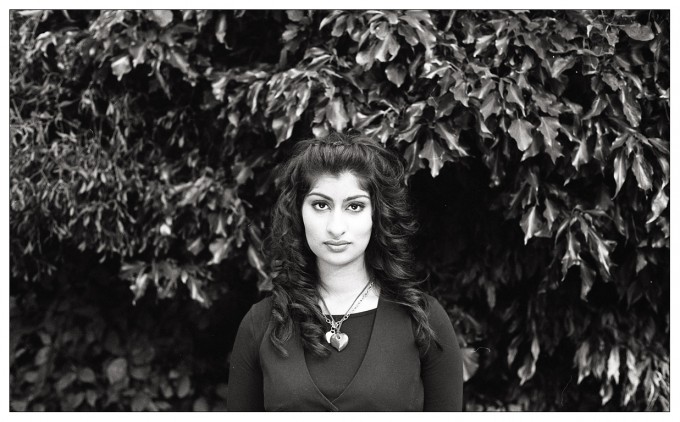
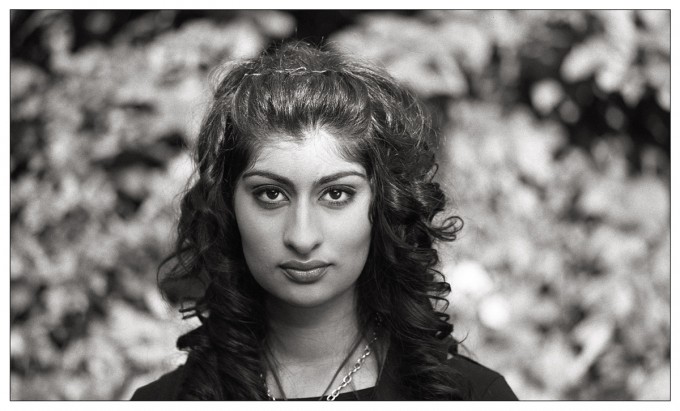
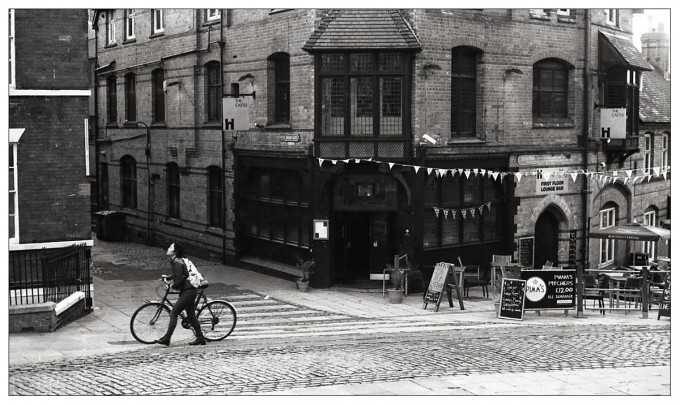
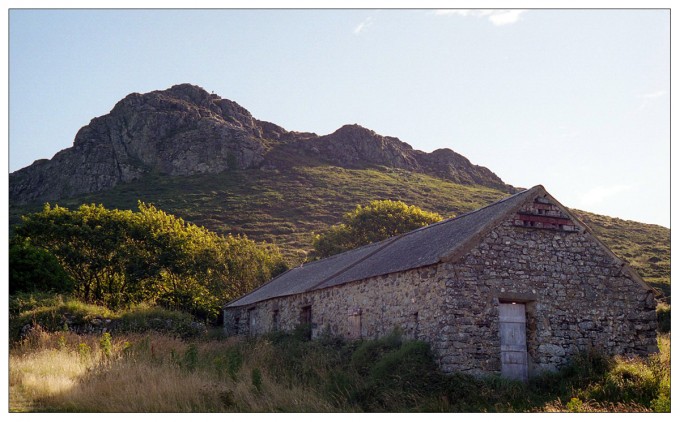
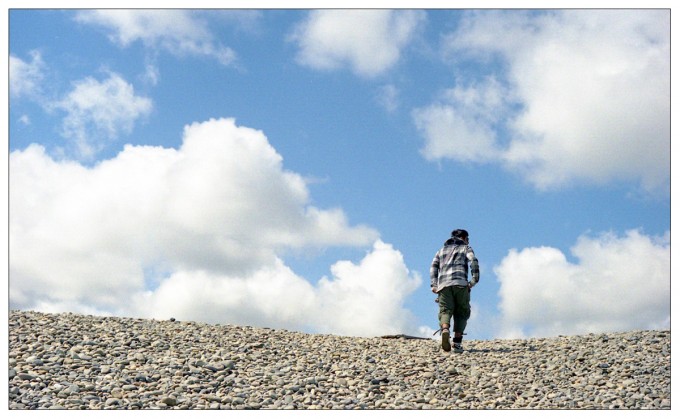
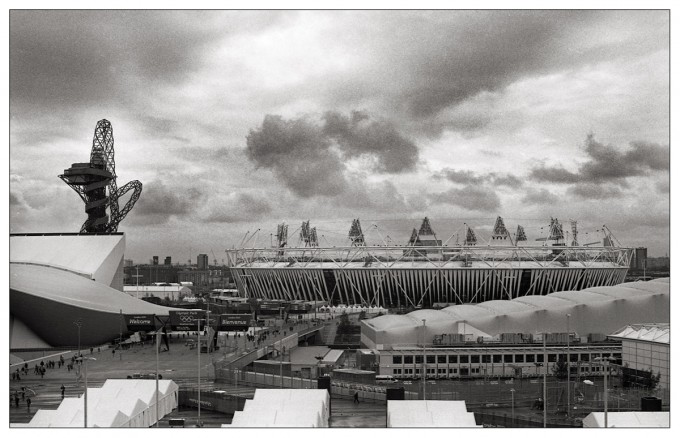
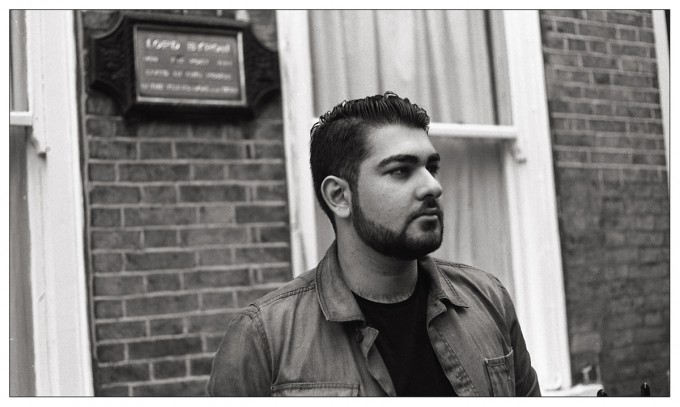
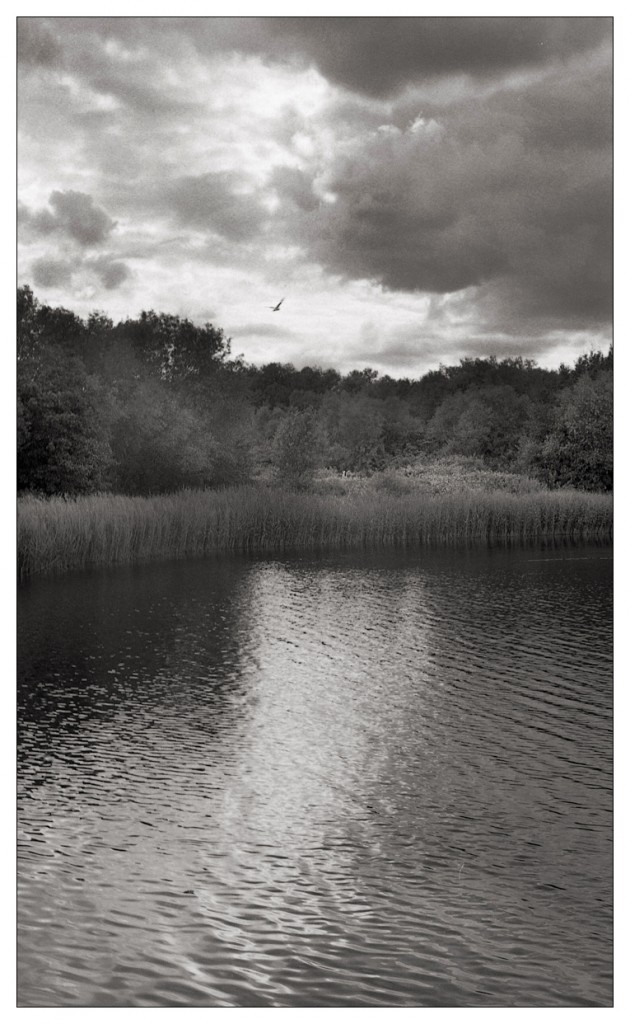
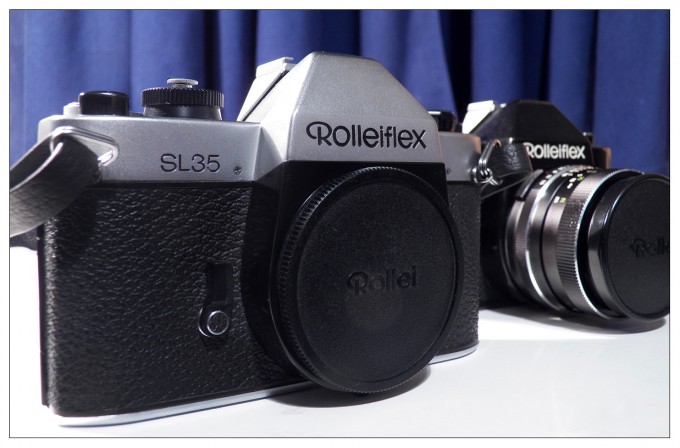
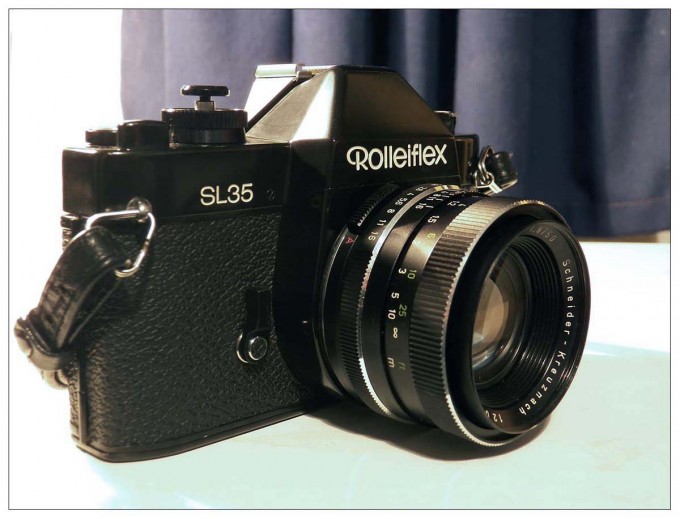
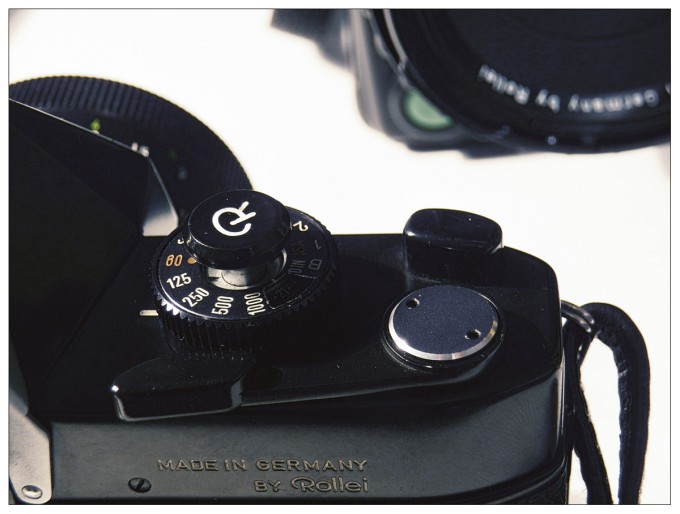


These articles have so inspired me to take out my old, German-made, Rollei SL35 out of the bag and use it once again. The pleasure of using a basic, manual SLR.
WHAT I admire most about the Rollei SL35 – and several other manual SLR models (esp. the Pentax MX) is the sheer simplicity of features & consequently operation. All you need – (although that’s asking a lot from some of today’s “idiot-box, auto-with-everything”, amateur photographers) is the knowledge required by YOU, self-choosing & setting your own shutter-speeds, f-stops + focusing MANUALLY etc. (And to those just about to sneer, yes you D-LSR guys, I own a Sony a900 – multi-modes and menus a plenty + all the pseudo-knowledgeable, dressed-up language that simple photographic concepts are described in, in its booklet!)
PS. LENSES: Check out the fact that Schneider-Kreuznach manufactured in the 1970’s, 2-3 lenses especially for VEB Pentacon, in Praktica M42 fit. I have both their 135mm/Xenar & 35mm f2.8/Curtagon electric lenses; and W. German made.
I must concur with an earlier comment: You MUST get the Rollei M42>QBM adapter, (it allows 100% seamless, automatic lens operation on the SL35.)
As for ‘metering’..only an idiot would rely on the accuracy of TTL, (esp re. 35mm transparency!) when you have a good separate light-meter, and one used in ‘incidental’ mode. I have had a Sekonic for years..used both amateur & professionally.
Hi guys. I’m not a person with any camera knowledge but I found this article researching a camera I have and have never used. Think I got it from a relative but can’t remember. Anyway it’s a rolleiflex 350sl with a 1:2/50 lens and a 1:28 35mm lens. Is it worth trying to sell and a rough pricepoint would be good. Its in good to very good condition. Seems to work fine (I ran a film of snaps just to try it)
Thanks in advance and sorry for humouring a complete numskull.
The SL350 is Ultra rare and The Collectors piece! Keep it!
I love this discussion regarding the SL35, because the views of a new generation are confirming what I suspected all along, that in spite of all the hype surrounding famous marques, my trusty old SL35, Singapore-made and still going strong after nearly forty years was an excellent choice. I still have the original shop receipt, showing the price I paid – £79.95 for a camera that was being remaindered in a department store having failed to ignite the market at its original introduced price of over £300. But I was pretty annoyed with Debenhams at the time because I originally bought a German-made model and had to return it after 2 rolls because – in my ignorance – I thought the scratches on the first film had been caused not by the processor but by the camera itself. Folly of follies! But I also acquired a majestic Schneider Angulon 35mm f2.8. The SL35 has been a solid workhorse since the 1970’s, I have taken pretty much 50,000 negs and slides with the camera and it fully functions to this day. I have also tried the 3003 and the 2000F but for all their virtues these cameras can be an encumbrance without the advantages of a larger format. Back in 2003 I moved to Rollei SLX, and since acquired the 6008i. Reliability issues over the batteries have been overcome using a Maha charger. I could go on – The SLX Mark 1 seems just as reliable as my SL35 but maybe its just luck!
David! Thanks for the post man!
I’m glad you share my choices – with the 6008i and SL35 and that you know that these are beautiful and worthy pieces.
I bought an SL35 German build for $59. I think the price is low because the meter does not work. There is also a very small ding on the backside of the prism.. I have always liked the SL35 but I ws suprised just how good it looks in person. I will have to get a handheld meter and see how it works. Wonderful camera.
Ibraar, these are very strange comments you are making about the Leica M System, Portugal, China etc. I have contacted Leica to comment on that.
Hi mate, The M digital (M8,9 etc), (I’ve read everywhere) is made in (apparently 90%) Portugal, and then finished in Germany to warrant the Made in Germany legend . If this information is wrong, then there are a lot of liars around, as I’ve read this on many websites.
That takes nothing away from Leica, nor the M Digital at all, as Portugal is a EU country under EU employment law.
I mentioned China as the vast majority of electronic components are made in China (or Taiwan or Korea) again, this is something I’ve read about and cannot verify this myself independently.
I do not wish to slander Leica or to cause any problems.
http://made-in-portugal.tumblr.com/post/6943479548/leica-90-made-in-portugal
http://www.tvi24.iol.pt/sociedade/leica-fotografia-fabrica-famalicao-tvi24-ultimas-noticias/1335776-4071.html
There are many more sources of information.
The point of my statement was that in times past 100% of German cameras were German, and for a while now they aren’t.
I prefer the Retina IIIS Rangefinder camera, which uses the same lenses as the Retina Reflex-S. Finding a working Retina Reflex with a good prism and meter: make sure to inspect in person. The Retina IIIS has a much simpler mechanism, and tend to be much easier to find in working condition. Google “Chris Sherlock” for retina types and information, and one of the few people left that service them.
The lenses are from Schneider and Rodenstock- German quality, and probably the least expensive that you can buy these days.
Thanks Brian, I’ve just mentioned it above. Is the retina IIIS as easy to use, as say a Leica M? (in regards simplicity)?
I’m currently checking out Chris Sherlocks site!
I use a Rollei 35TE- made a replacement battery out of 4 silver-oxide batteries. $15 at an antique shop.
The chrome SL35 that I had has a $50 find at a camera show, needed the exposure counter cleaned, an easy job. The Kodak Retina Reflex-S is my favorite German SLR, Schneider Xenon 50/1.9. Put in a new prism and exposure meter. The Retina IIIS rangefinder uses the same lenses, RF coupled.
Now the retina – That’s a camera I’ve been reading about lately. I need to pop into some classic dealers to try some out. What’s your experience with it?
Several years ago I bought a Retina Reflex C, the least expensive in the reflex range.
You need to buy any Retina Reflex with care. The shutter mechanism, being based around a conventional leaf shutter, is quite complicated. For viewing the shutter has to be open, with a blind covering the film, then at the point of firing, the shutter closes, as does the set aperture, and then opens and closes as normal for the exposure. Complications arise as for viewing the film has to be blocked off by a blind, so you can imagine a picture sequence is complicated: press shutter button, shutter closes, aperture stops down, film blind moves out of the way, shutter exposes, and film blind has to be returned to cover the film, aperture opens up and shutter opens for viewing.
There is a series of cams and levers controlling all this, and this is the camera’s Achilles heel. Wear and tear, or abuse, could cause them to go out of true, or very slightly go out of synch. Repairs can be expensive or impossible. I bought a repair manual for mine, and whilst I got it to work, for a while, I can vouch for how complicated it is to work on, and why it should be left to an expert.
The Retina Reflex IIIS is the better model as it allows for complete interchangeable lenses as opposed to front cells. The non-reflex Retinas, being far less complicated, are a much better bet, but good ones don’t appear to be cheap.
Thanks man, it seems to be very much like the Exakta Varex IIIa I had recently, in the way it functions.
Very complicated and delicate. But I suppose finding a Mint example is the goal here, and the complications are part of the beauty and joy.
Do you still use them?
Hi, Ibraar.
The Retina Reflex c ended up a piece of junk, in that it wouldn’t take any more tinkering from me, and I left it in bits many, many years ago. Yes, if you do hanker after a Retina Reflex, get the very best you can afford. But my advice, for what it is worth, top of the range non-reflex Retinas with f2 lenses are a much better bet. Still the same high optical quality but with conventional compur type shutters which usually give years of trouble-free service, providing they are treated properly. And they are easier to service. Usually, it is the slow speed train that slows down or stops. A good clean, and normally everything will then work hunky-dory thereafter.
Your Varex IIa (sic) is a different beast. I have the later Varex IIb with an f2 Pancolar. These are fascinating examples of truly clockwork cameras, not a battery in sight, giving up to 12 seconds exposures, and variably delay, cassette to cassette loading, interchangeable v/f and screens, and a unique built in film cutter. They are, however, different beasts to the Retina reflexes, incorporating normal focal plane shutters, not complicatede between lens leaf shutters as in the Retina’s. I believe you may be confusing the Exakta mount lenses which are semi-automatic with the action of pressing in the shutter release built into the lens activating the diaphragm just before it engages the actual shutter release built into the front of the body. The diaphragm opens up when pressure is released on the lens button shutter release.
When you shoot with a Retina Reflex, you don’t see any of this as everything is controlled from within the camera body simply by pressing the shutter button, which does nothing except trip the shutter normally and puts in train all the actions necessary to complete the exposure..
Thanks for the information Terry, I was checking out Captain jacks Retina pages http://captjack.exaktaphile.com/Retina/Retina%20Cameras.htm and he says the same. The Retina IIIS he says is a good bet, though bigger than the Reflex.
And the IIIc and IIIC though I am unsure about the differnece between the small c and big C versions.
I loved the look and feel of the Varex but as I said, it had problems, hence I sent it back. I’m on the lookout for another, and out of the IIIc IIIC and IIIS what would you recommend?
Ibraar, I have no personal experience of the rangefinder Retinas, so I can’t advise. My comment about going for one of these as opposed to a reflex was made in the knowledge of the complexity of the reflex shutter assembly of a Retina Reflex C.
I’ve been completely honest in my review. I mentioned the quirks, the annoying stop down meter of the Sl35, and the alleged reliability problems and the fact that the German made ones in Mint condition are the ones to get, especially the SL350.
I also mentioned the lenses, that even the Rolleinars are pretty good, the Schneiders and Zeiss are very good, with some exceptional, but not to expect sharpness you get from modern quality lenses.
I also compared it to my Olympus OM2n, a more than robust and above average Japanese camera of its day.
I said the OM2n is a Better camera – take a look.
The point of these reviews is to encourage the photographer in the digital Age to try something old skool, and to enjoy it, warts and all. And to appreciate Classic luxury marques such as Rollei (along with Leica and such)
if it were all about expensive quality, why would I have bothered reviewing the Yashica 230AF as I did last time?
And some people don’t want to spend a LOT of money on other 35mm cameras such as the Leicaflex SL (which I notice costs far more than the Rolleiflex – body only costs twice as much on average as a SL35 German made Rolleiflex with Zeiss Planar HFT kit or Schneider Xenon kit)
There are better and worse cameras out there.
Ultimately, it’s the photographer who makes the photo – I may not use Digital, but I would like to make it clear that that is my preference and nothing to do with other peoples work – people who create masterpieces and beautiful photographs with their Digital cameras, far better and beautiful than anything I could ever hope to conjure up.
No offence to anyone please, Peace!
Ibraah.
I was almost moved by your great and heartfelt writing here to call you directly. Since there appear 9 of you in the UK I thought better of random calling.
Point being you were very clear in your explaination with regards these old cameras and your passion for using them. How some got off track with digital v. film I’ve no idea.
My second camera and slr was a Praktica then a Yashica Pentamatic and finally a Nikon F. I’ve had and used literally dozens of Nikon F through F5 bodies, Hassies from the 500C through the Fuji made current models, Sinar P and P2s and loved each and every one.
And now we (commercially) only use Canons and Hasselblads.
And while I’ve kept maybe a dozen old film cameras ( and maybe a half dozen totally unopened Nikons) my favorite camera is either this iPhone 4S or the Oly EM-5s which are the first Olympus cameras I’ve ever owned.
And I know the future well enough to know that all this digital stuff will not function at all in the time I’ve simply owned and kept a few of my first Nikons and my now unused Leica M2R with a 12mm on it.
So what? It’s a blast and I’ve no regrets.
And I’m glad you’re loving your newfound treasures. As I also treasure my Pateks.
Carry on. As you Brits like to say.
If your on Facebook look me up.
Jim, thanks for the message, and sharing the the experience. man, it’s nice to come across people with similar thoughts (and tastes – a watch enthusiast! and a collection of Patek’s! Treasures, REAL treasures!)
I’m not a Pro (very far from being one) and I understand that Pro’s need to use modern gear, the work simply demands it. And for this, the best thing to use for Clients is Digital.
But as a hobby, and a pastime, I’m not too fussed about time and such, or instant results hence Film suits me fine. I can develop the BW, or go to my local Lab for the E6/C41, I can scan them myself or print them in my small darkroom – and the whole process is a part of my life – as it’s my hobby, and I’ve all the time on Earth to take it easy, only shoot stuff when I really want to and have something to photograph, and I am very happy to wait for the results. In this world of Instagramme and Hipstamatic that’s probably not en vogue.
Old and classic camera’s – part of the joy is in owning them, handling them and the association with their history and prestige. Working out their strengths, and marvelling at the results. It’s like the Watch analogy, of course we all know a Seiko Kinetic or Casio or a Quartz Timex are more accurate by far than any Mechanical watch, and to some people a watch is a watch and has a function – to tell the time. In the same train of thought, a camera is a camera, and if it is quicker and sharper lensed and higher resolution than another, then that’s the one to go for – but I’m more about form, history and aesthetics rather than function.
But I have noticed, (in fact it’s blatantly obvious) that Camera manufacturers (especially Fuji and Olympus) have shifted to designing retro styled camera’s, which hark back towards cameras of days gone by – beautifully styled and made (the X100, XPro and OMD/Pen EP). And for good reason, as these have character, charm, a quality feel and have precision optics with metal shafts and mounts.
I just simply went one step further (or rather backwards) and started eyeing up real Classic cameras – and to be honest, the quality they exude is phenomenal by todays standards.
My collection is slowly building up, and is pretty sparse in regards real Classics (I have a few ‘modern’ Film cameras such as the Contax G2, Tvs III, T2 and Aria, plus the Yashica 230AF, Fuji GA645 and Rolleiflex 6008i) but I also have an OM2n, the two Rolleflex SL35’s, and two Yashica Minister’s (one the original version the other the later D)
I obviously don’t use them daily, and keep them cleaned and safe, handled with Kid gloves, much as I keep my watches! (then again, I probably photograph once every month or every few months – mostly on events such as birthdays, xmas, days out or holidays)
I just returned the Exakta – it was probably the most beautiful camera I have ever seen, but it had a shutter curtain problem, it was sticking, and a few other niggardly problems. Besides, I probably would have just kept it, probably shot literally one or two rolls with it, and built up a lens set – as it was a bit too complicated and bothersome to make the most of. Over engineered.
Anyway, I’m ranting again, I’ll get in touch with you and thanks again!
Ibraar, or Rolleiflexed, I assume you are one and the same?
I’m sorry if you took my short critique of the SL35 so personally. It most certainly wasn’t aimed at you. If you re-read it you will see I was commenting on the once great German camera industry which, in face of the onslaught of cameras from the land of the rising sun, was in decline and on a slippery path to almost oblivion. In the face of this, the launch of the SL35 with its very basic specification and lowish price, has to be seen as an anachronism. Remember, I am not talking about the here and now and the pleasure it gives you as a film user, but then, when it had to compete with every other camera for one’s money. This is why I commented it was nothing special.
I instanced the SL cameras just to highlight what was already possible, albeit at a far higher price, from another German company. I also commented that they, too, could not compete, either. So I wasn’t simply extolling the virtues of the SL series per se. I could have instanced the original Leicaflex. Beautifully made but already obsolete when it launched in 1964. This didn’t have TTL metering, but it did meter at full aperture.
Because there were so many competing slr’s, the Rollei with its very limited spec was always going to face stiff competition. Now, the little Rollei 35’s are something else, as they were almost in a class of their own. And of course, Rollei did go on to better things with their quite sophisticated modular designs.
Terry, man, no problems, please, I didn’t take it personally at all, I was just perplexed at why a simple review of an old camera from a distinguished maker had been dismissed so easily.
Ultimately, Rollei isn’t my dads company and so I have no reason whatsoever to be annoyed or to take any criticism personally. if it came across that way, I apologise!
I completely understand what you’re saying – I think wires were a bit crossed somewhere.
If I can explain a few things please;
My Reviews are simply about encouraging Photographers to explore – whether they’re (the reviews) effective or not is another matter entirely.
Film is dying a death, Kodak has jumped ship, and I think new younger Digital photographers, and older ones starting off should be encouraged to explore Classic cameras’s, 35mm, MF etc – it’s all part of being creative, with the added bonus of owning and using a classic camera made by an old extinct yet renowned marque.
I think the Rolleiflex SL35 is relatively unknown, especially in the States, and for all its faults, is IS a beautiful camera, it is a joy to own and handle, it’s so solid and well crafted compared to modern plastic cameras – do you catch my drift?
And Pentax, Nikon and Olympus are pretty common, easily available and have thousands upon thousands of users worldwide, and thus not as ‘special’ as a little known Camera such as the Rolleiflex – which turns heads! trust me!
And the lenses, there are some real Gems amongst the collection, they’re Zeiss and Schneider after all – and not Mickey Mouse lenses – the 18mm f4 Distagon, 50mm f1.4 Planar, the 35mm f1.4 and 28mm f2 to name a few are exceptional lenses, even by todays standards – and some were recycled to create the Contax/Yashica Zeiss and todays Zeiss – so I think the comment regarding the Leitz lenses being way superior isn’t quite correct, and such comments tend to put people off.
The Rollei is also relatively Cheap – a bargain, a Zeiss and Schneider lensed metal mechanical camera for under $100 is a real bargain, you have to pay about 10 times that amount for a Leicaflex or a Swiss made Alpa.
Anyway, I can’t justify buying a Leicaflex SL2 – though they do look severely tempting!!! I’ll keep a look out for one though and see if I get lucky.
The Rollei 35 seems to scare me, I’m intimidated by the focus methods used, I’m completely useless as depth of field scales and distance scales – though they do look stunning (especially the German ones)
Anyway, thanks for your message again and take care
Hello, Ibraar.
I think you nailed it when you suggested our lines were crossed well, not exactly crossed, but I’d suggest approaching from different directions. I concede yours is purely a user report, and I was addressing and questioning why Rollei would, at that time and when the German camera industry was trying to play catch-up, launch a camera with such an antiquated spec that was, just like the original Leicaflex, obsolete on the day it was launched.
When it comes to lenses, I have a foot in both camps, Leitz and Zeiss. And you are correct, despite the basic body spec, you could get some very good lenses for it. I now favour Leitz glass, but my 1960’s vintage f1.5/50mm Sonnar on my Contax IIIa outperforms my Leitz f1.5 Summarit of the same vintage. It is sharper and less prone to flare, but this is not to say that the images that the Summarit is capable of are not very pleasing. Zeiss glass and Leitz glass just behaves differently, then, as it does today.
I suspect you’d warm to an SL2. They are superbly built, heavy, and have a surprisingly bright and clear screen even by today’s standards, and the superb metering system employs both full field and selective light (hence SL tag) spot metering. But, sadly, they attract collector prices and which for enthusiastic users means having to pay inflated prices. And Leica lenses seem to be on an ever increasing cost spiral.
Keep up your posts. I’ve always enjoyed your images and photographic eye. Terry.
Let’s agree to disagree, and give credit where credit is due, one just needs to pick up a Rolleiflex SL35 and feel it to know it is special, I also doubt you guys got the jist of my review. I’m all about Bargain hunting, and using something Different and Special.
Mine certainly look and feel special, and I’ve handled, used and possessed quite a few cameras to warrant a comparison.
And for 40 year old cameras they certainly feel robust enough, I’m thoroughly enjoying mine and I’m sure many others will follow suit. I’ve had 3 OM2n bodies, two developed faults and problems with mechanics – does this mean “not special, as they have reliability issues’? My friend, along with others have had many issues with their Japanese cameras, the Fuji GA645zi, the Fuji X100 and yes, the Leica M8 to name a few – what, does this mean they’re rubbish? My G2 has had a shutter replaced, is that bogus?
I am enjoying the camera, and I very much doubt I will ever experience any reliability issues – I’m hardly a Pro, and will only ever shoot a handful of rolls a Year – my review wasn’t about buying a SL35 to use as a sole camera, but the SL35 as part of a collection, to be used and enjoyed as and when, as a luxury – an affordable luxury! Owning a Rolleiflex is a luxury, and buying one for $30 is a Bargain and not to be sniffed at!
The SL350 addresses the metering issue, but as I said earlier, the metering is quirky and useless, AND I don’t use the inbuilt meter, not on my OM2n nor on my Roleiflex – I use an incident handheld meter.
The Rolleiflex SL35 is a beautiful camera, and there’s no doubt, I mean just look at it! And no japanese camera can come close to the look and feel of the thing, I’m not blind, and do appreciate fine craftsmanship (I collect Swiss and German mechanical watches) the Singapore models (the SL35) have had reliability issues, and I have heard as much, but the users are split, some have had no problems, others have had problems with the German built ones.
I wouldn’t swap it for an M9 as I don’t shoot Digital (unless using my Kodak Z990 for product type shots and quick snaps) and Digital, whether an M or a Leaf back – doesn’t mean anything to me.
I wouldn’t swap it for an M6 as I have a Contax G2 and I don’t need the M glass as I feel the Zeiss G surpasses the M glass – all my preference of course, just like yours regarding the SL35 – but other people may be tempted, others haven’t ever had the opportunity, and many others are new to 35mm, having come from digital – and I’d ask them to look out for a MINT German made example, so please don’t put them off!
This isn’t a Digital vs Film article, nor is it a Leitz vs Zeiss/Schneider article. I’m sure the Leica SL is a lovely camera, and I may one day buy and own one, as they can be bought relatively cheaply – but that’s another brand another style of camera – it doesn’t mean we dismiss everything else?
Does that mean let’s all forget about the Rolleflex TLR, or the SLX as Hasselblad does it better (I’m not saying it does) or forget about the Mamiya 645 as the Contax 645 is on another level, or dismiss any cheaper digital SLR as we can spend and own a more advanced one, or Canon L lenses are better than Sony so forget Sony – these are childish arguments.
The Leica R lenses may well be ‘better’ (whatever that means) than the Zeiss or Schneider HFT and T* lenses, but ‘far superior’? That’s open to debate – besides, is that what it’s all about, sharper lenses = better? And since when did photography for photography’s sake cease to play a part and instead be all about “my car’s faster than yours” type of debate? or to handle and use a mechanical camera? or to appreciate the limitations of a Camera?
The Rolleiflex SL350 is rising in value and very rare, and as someone else mentioned above, will a Digi cam from today still be in use in 40 years time? Will the electronics last that long?
That the SL35 launched in 1970 with nothing better than stopped down metering says it all for the demise of the German camera industry. Rollei was never a 35mm camera manufacturer and so had no pedigree, and it showed. Two years earlier In 1968, another German slr was released, and bearing in mind it pre-dates the SL35 by two years, it was way advanced as an all mechanical camera. It had TTL metering, both spot and full field, and had a top shutter speed of 1/2000 sec, was much better built and had far superior optics. I’m talking of course of the Leica SL. Soon after came the superb SL2, but neither could compete on features with the models coming out of Japan.
Sorry, but these early 35mm Rollei’s are nothing special.
The Rolleiflex SL35 was a very aesthetic camera in it’s day, with a super bright viewfinder and a well placed shutter release and dial. It had a great feeling in the hand as well. Unfortunately it was not as robust as most cameras of the day. The achilles heel was the advance mechanism. The metering was stop down, and quite slow. If someone offered me an M9 for an old Rollei I would run and never look back.
I owned the SL35, SL 35E and the 2000/ 3000 series. None of them lasted as long as a Pentax Spotmatic or Nikon F, and I finally drifted away from the need to see made in Germany on the back. Most of the lenses were good. The Rolleinars were made by Mamiya mostly, and were decent, but not stellar by any means. The Zeiss ones were generally very good.
Enjoy the camera, but don’t expect the level of robustness that even the most average Japanese cameras of it’s day had.
Thanks for the appreciation of this classic guys and the stories.
I just wish more photographers would look to buy and keep one of these beauties.
I forgot to mention, Rollei later on released the Superb System Camera using the same lens mount;
The Rolleiflex SL2000/3000 – which resembles a Medium Format camera, complete with WLF!
If anyone is interested, ffordes.co.uk have a German built Rolleiflex SL35 silver with 55mm f1.4 Rolleinar AND Rolleiflex 3001 with a 50mm f1.8 Planar in stock.
http://www.ffordes.co.uk/category/Film_Cameras/35mm_SLR/Rollei
They deliver worldwide and their service is second to none.
I think I’m going to send Steve a review of the Rolleiflex 6008i next.
Ibraar
Great article Ibraar! The SL35 once (40 years ago?) held a faint attraction to me, but I settled on a (lowly?) Yashica TL Electro, m42 thread, which functioned, lens open metering of course, flawlessly for years until I got an FM2n. That one still works like a dream, as do the FA and the FE2 I got later, 2nd hand. For access to Zeiss optics I have my small collection of Contax (made by Yashica/Kyocera…) bodies.
Working with a well made largely mechanical camera is special, very special. I wouldn’t miss it for the world.
I walked the same way – just 2 Years agon.
Fed up with the Megapixel-Maniacs I want to go back to the Roots of Photography.
It´s just the Picture that counts and it´s just a Tool that can handle Time and Aperature
to make some……….
I had some Leica´s but I was nerved by the mass of Snob´s I meet in Communitys
who think Money can buy Skill.
You can make great Pictures with every Camera – even a iPhone – no need to spend
thousand of Dollars for just one single Lens………..
Agreed! Thanks man!
Thanks Ibraar for writing about different things like film cameras. It’s a nice change and always interesting. If you’re a photographer you’re a photographer, and this sort of thing will interest and educate people, even if they never want to own or use one.
I have a Spotmatic II that is still working like the day it was made, which I would guess was over 40 years ago, and the 35mm lens on it is pin sharp. Will my EOS40D still be going strong in 40 years, and all the electronics in the lenses? Not likely.
I always enjoy your articles.
Thanks Harry!
Good story, brings me back when I had a Rolleiflex (twin lens) with 120 film. The only company from Europe left standing from the past is Leica, good thing the M9 was such a success. I am afraid the M10 is like the Leicaflex, a little late to the game, and going against the Japanese giants again.
Ibraar:
What type of scanner did you use? What was the resolution? The clarity of the pictures are astounding when I enlarge them on my computer or iPad. Wow!
HT
I use an old Epson 4990 flatbed and for these I used basic Epson Scan software at low resolution. You can get better smoother and higher resolution scans with better scanners and with better software such as Vuescan.
Thanks
Ibraar:
This was nice article and I love well made vintage cameras. All the photos are very nicely done. The photo of Your niece reminds me of the great, talented and beautiful actress Sophia Loren.
Regards,
H T
Ibra…
as a WIS… and snapshooter
I really appreciate your article..
great insight and information
beautiful photos, gorgeous family
and passionate life
Sincerely
William
I had one for a short time- sold it off. The main drawback is that the SL35 uses stopped-down metering as did the M42 screwmount cameras. Nikon and Canon had gone to full-aperture/coupled metering by the time the SL35 entered the market. The SL35M that came after was loud, and not as mechanically reliable as the competition. Something akin to the Contarex: great lenses, body did not keep up features with the competition.
Hi Brian, the SL350 addressed the stop down metering issue. I just use my external lightmeter, easier.
Rodenal, mix it three to one. Then push the Tri-x to ASA 800. thoses where days. Great pictures. I used a few of the old cameras, because I am old. You would hold in your hand camera made for a life time of use. The photos would never stop giving one wonder. Thanks for this article.
Thanks a lot guys, appreciate it! it is a beautiful camera and I am loving handling it and owning it (I have yet to use my silver one)
I’m seriously getting the Classic Camera bug, have just bought myself an exquisite Ihagee Exakta Varex IIa with Carl Zeiss jena Biometer 58mm and a prism plus waist level finder for £120 in Mint condition (that’s about $175) And it is a work of art! (the one with the embossed script)
I’ll review it soon.
Sorry about the iPhone typos!
What a lovely tribute to a nearly forgotten old line manufacturer. I just can’t see this much love in the distant future for the likes of Sony or likely even the “modern” Nikon. Boy have we come a long way in homogizing our photo tools.
Great writing. Thanks for the effort.
Great pictures as always, Ibraar, and a very informative article – I really had no idea about any of this. i think the Rolleiflex cameras are not that well known in the US. You have have whetted my appetite.
very nice article. I too am admirer of these classic gems. Great photos too.